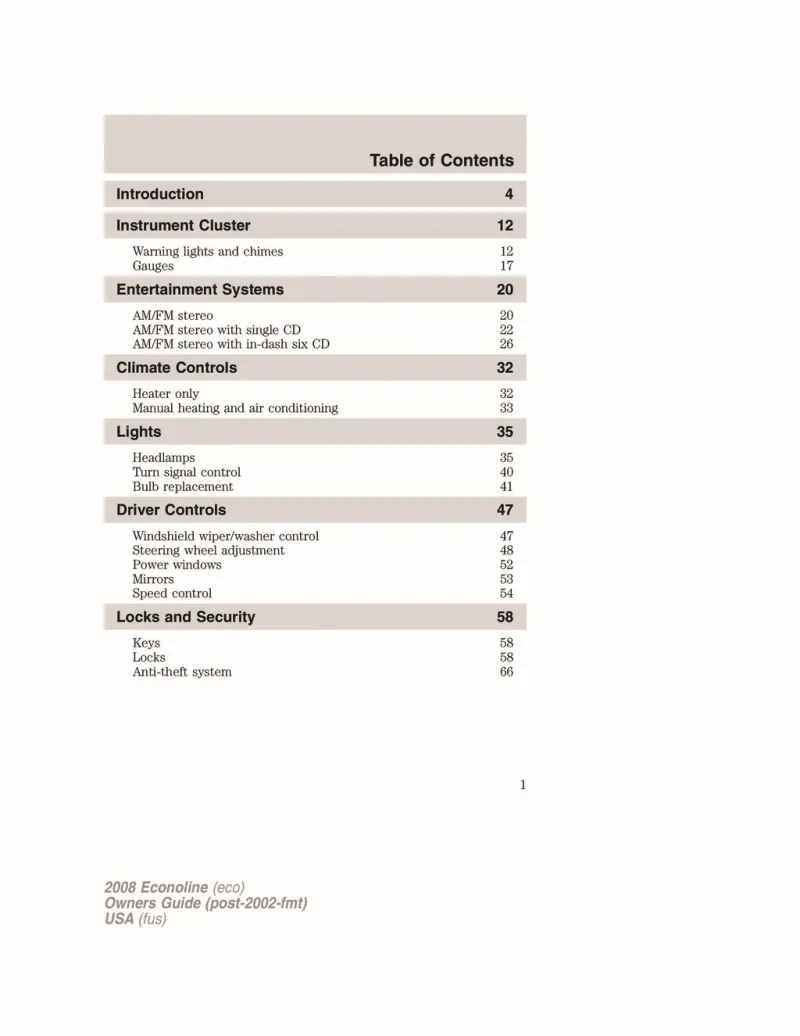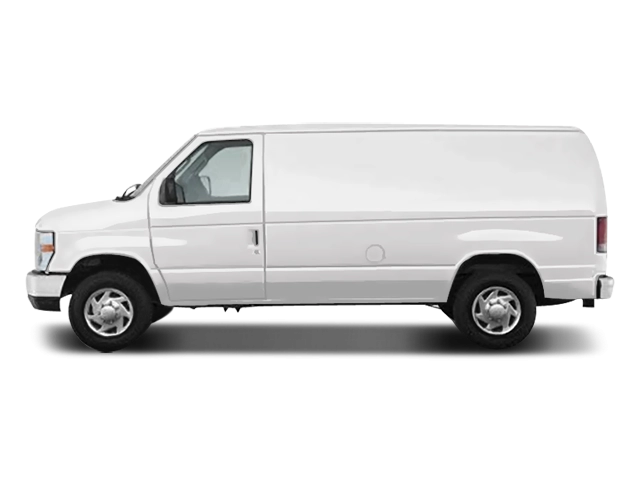2008 Ford E150 Owner's Manual

Table of Contents
2008 Ford E150 Overview
Introduction
The 2008 Ford E150 stands out as a reliable full-size van designed for both commercial use and family transportation. With its spacious interior, robust build, and adaptable configurations, the E150 remains a popular choice for those needing a versatile vehicle. Its sturdy chassis and advanced technology provide peace of mind for daily drivers and professionals alike.
Powertrains
Under the hood, the 2008 Ford E150 offers two powerful engine options to meet different performance needs. The standard 4.6-liter V8 engine produces a robust 305 horsepower and 420 lb-ft of torque, delivering ample power for towing and hauling. For those requiring even more strength, an optional 5.4-liter V8 engine that churns out 300 horsepower is also available. Both engines are paired with a smooth-shifting four-speed automatic transmission, ensuring seamless acceleration and handling.
Trims
The 2008 E150 is available in various trims to cater to diverse preferences and requirements. The base trim, known as the E150 XL, offers essential features such as vinyl seating and basic audio. The upgraded E150 XLT trim introduces enhanced amenities, including cloth upholstery, power windows, and improved audio options, making travel more comfortable and enjoyable.
Features
Ford has equipped the 2008 E150 with a range of practical features designed for convenience and safety. Standard features include an AM/FM stereo, air conditioning, and a basic safety package with dual front airbags. Optional features such as a rearview camera, seating for up to 12 passengers, and advanced tech upgrades ensure that this van can meet any driver’s lifestyle. Versatile cargo configurations further enhance its usability, making it a smart investment for families and businesses alike.
Owner's Manual
The owner’s manual for the 2008 Ford E150 is a comprehensive guide ensuring that drivers understand the vehicle's features and maintenance requirements. It provides detailed instructions on routine service, troubleshooting, and safety protocols, essential for keeping the van in excellent condition over the long haul. The manual is an invaluable resource for any E150 owner, enabling them to maximize their vehicle's performance and longevity.
User manual download
The Ford E150 owner manual for the 2008 model year is to be found in PDF downloadable format on this page. The owner manual for the model year 2008 is free and in English, but the repair manuals are usually not easy to get and may cost more.
Manual Questions
Fill the form below and someone will help you!

